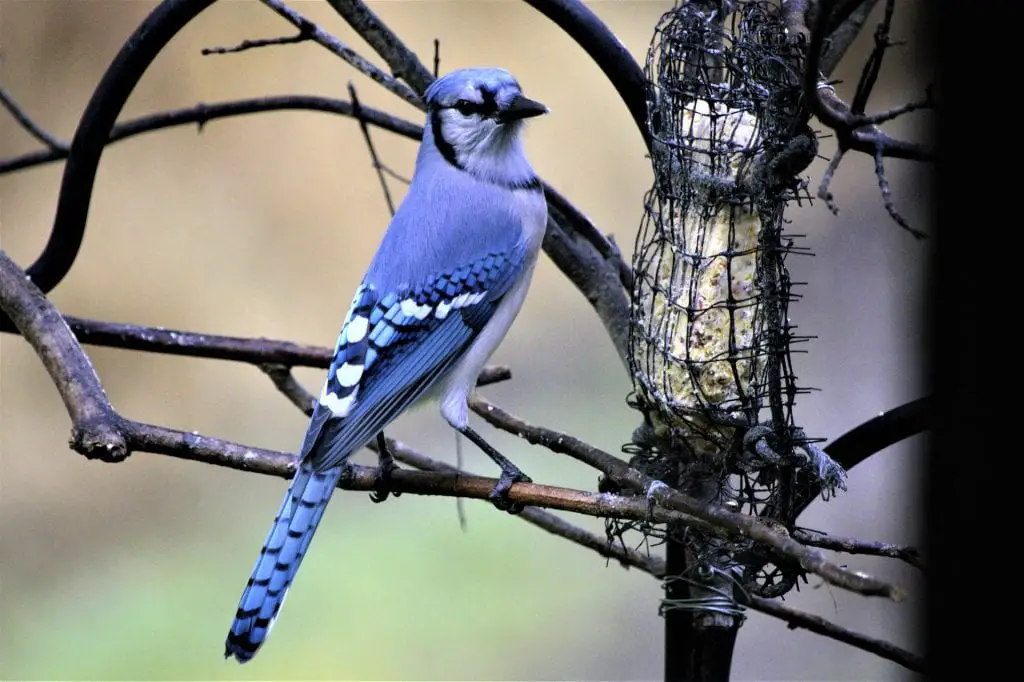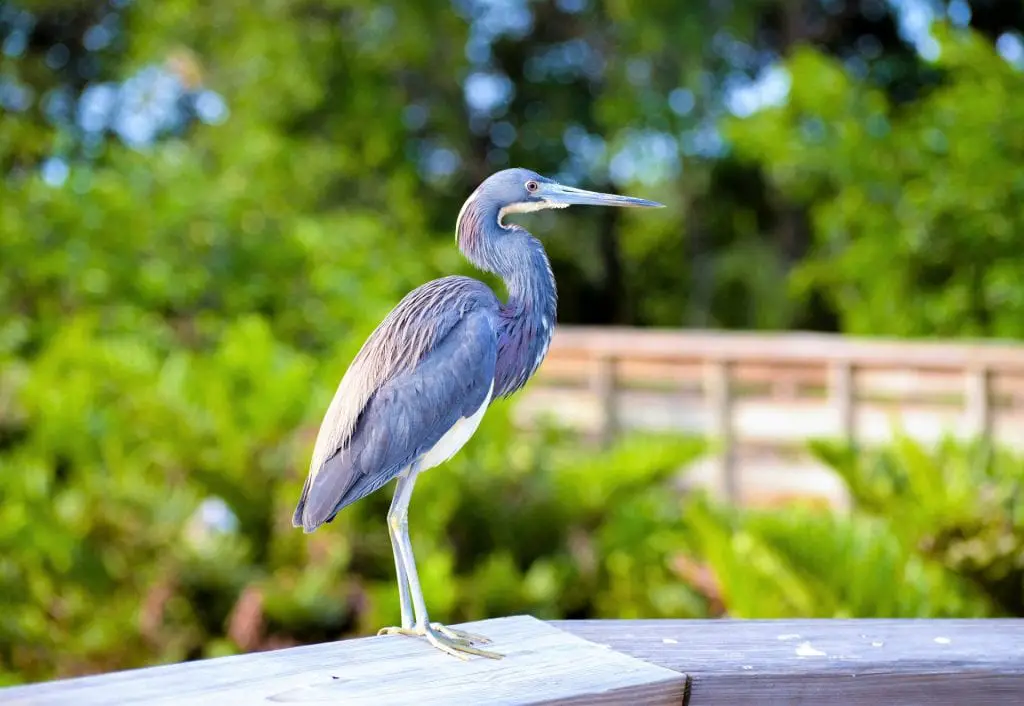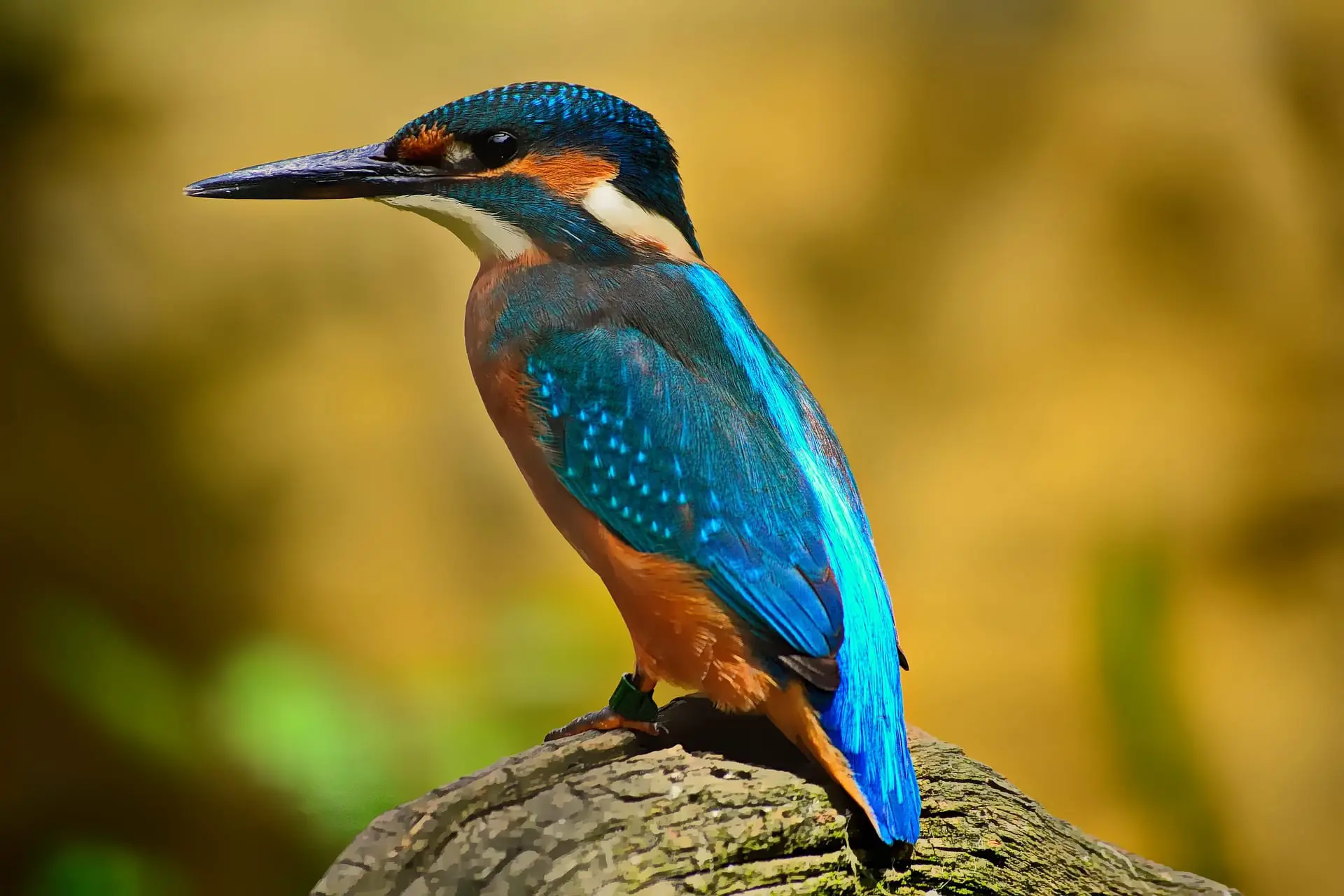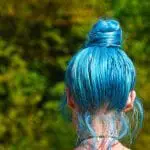Blue is a color closely associated with nature. Even pictures of blue skies or blue ocean can leave us with a pleasant feeling. But do you know that nature has more blue elements than the ocean or sky? There are plenty of blue colored plants, animals and flowers. There is a wide variety of blue birds out there.
These pretty blue things look fascinating among the greenery of trees. Blue colored birds are not commonly seen but they are not that rare either. If you look closely, you can easily spot some varieties of these pretty blue things in your area. Believe me, they are a sight for sore eyes. Let’s take a closer look at some rare and common varieties of blue birds.
Blue Bunting
The Blue Bunting is a small bird with a length of 5.5 inches and wingspan of 8.5 inches. This pretty blue thing can be seen in brushy thickets and forest edges in many parts of Mexico and Central America. They build their nests in thickets and woodland from sea level to about 1800 meters. These birds rarely visit U.S. The male of this species is dark blue in color, while females are a rich reddish-brown. Its diet comprises of seeds, insects and larvae.
Mexican Jay
True to its name, this socially inclined blue bird lives in the Mexican mountains. These pretty blue things are characterized by long tails and a heavy bill. They are 11.4 inches long and weigh around 120-135g. This songbird lives in social groups and hunts for food on the ground or on trees. They feed on acorns, fruit, carrion and eggs.
Indian Peafowl
This bird with a 5 feet elaborate tail can easily be called the largest among the blue birds that fly. These birds are natives of India and Sri Lanka in South Asia region. The males are called peacocks and the beautiful feathers are their main attraction. This is the only bird that has a beautiful tail that can be unfurled to present a spectacular view. These Omnivorous birds have a lifespan of 20 years.
Mountain Bluebird
The powder-blue Mountain Bluebird is a native of North America and can migrate to Great Plains and go up to the Atlantic Coast. Mountain bluebirds are medium-sized and grow up to 16-20cm and weigh around 30gms. They gather in large flocks and make their nests in tree hollows in remote areas. Its diet consists of insects and berries.
Hyacinth Macaw
This largest member of the macaw family is a native of Brazil, Paraguay and Bolivia. This stunning cobalt colored bird can reach over 40 inches in length. This pretty blue thing is a star attraction in zoos and is valued as a pet. This endangered species can be found in scrublands, outskirts of rain forests, grasslands and lightly forested regions.
Hyacinth macaws have specific diets consisting of palm nuts from palm trees. These extremely loud birds have strong beaks carrying over 200 pounds of pressure per square inch.
Black-throated Blue Warbler
Black-throated blue warblers are tiny birds measuring 13 cms in length and weighing a meagre 9 to 10g. They are found in north-eastern North America in summer, which is their breeding season. These birds prefer making their nests in undisturbed forests with a dense, shrubby understory. They have a lifespan of a maximum of 10 years and their diet consists of insects and fruits.
Indigo Bunting
These are small birds with short tails and conical bills. The male Indigo bunting is blue all over and these birds grow up to 12-13cm. Females are typically brown with a light brown blue-tinged beak. They breed in bushy areas and also fields and forests. These birds can be found all through eastern United States. This bird migrates at night and eats insects, seeds and berries.
Great Blue Heron
This majestic bird is found in marshes, estuaries and ponds across U.S. These large birds have a length of 91-137cms. They are huge in size and weigh 5 to 6 pounds. These birds have blue-gray body with a slight azure blue flight feather. Great Blue Herons have night vision and eat mostly fish. These high-flying birds are notable for their tucked-in neck and long legs.
Blue Jay
Blue jays are commonly seen in North America. This pretty blue thing can be found in family groups or small flocks. They grow up to a maximum length of 10 to 12 inches and follow a predominantly vegetarian diet comprising of acorns, nuts and seeds. These small birds love to make nests in backyards, parks and woodlands.
These noisy birds can be found in all kinds of forests but oak trees are their favorite nesting place. They have an attractive blue crest, back wings and tail. The females are slightly smaller than the males.

Asian Fairy-bluebird
The Asian Fairy-bluebird can be seen across tropical southern Asia from Himalaya foothills, India and Sri Lanka to Greater Sundas and Philippines. The adult male has blue and black plumage. The female looks duller with malachite-green head, body and central tail feathers. Fruits form the primary diet of this highly active bird, which builds its nest 2 to 6 meters above the ground in the forest.
Nilgiri Flycatcher
Nilgiri flycatcher is found in the Western Ghats of southern India. This bird is about 13 cms long and is dark steely indigo blue colored. Nilgiri flycatchers breed in evergreen hill forests and woodlands. The ongoing habitat destruction poses a threat to their population. This species prefers to forage alone and breeds from February until June.
Common Kingfisher
The Common kingfisher can be found throughout Europe and Asia. These beautiful birds can be seen in wetlands and on the shores, streams, ponds and lakes. They are carnivorous and feed on prawns, crabs and insects. These birds are territorial and communicate vocally with a long trilling call.
White-bellied Blue Robin
This pretty blue thing is a native of the Shola forests of southern India. This bird lives in dense forests and its breeding season varies from April to June. This tiny bird grows up to 14 cms in length has a short life span of only 9 years.
White-Bellied Blue Flycatcher
This species is around 13 cm long with a longish beak. The male is indigo blue while the female is olive brown. They are usually found in dense forests in Western Ghats of southwest India. They feed on insects and breed in forest undergrowth and ravines.
Siberian Blue Robin
This small, brilliantly-colored songbird can be seen in eastern Asia, Siberia, northern China, Korea and Japan. The males have deep blue upperparts and white underparts. Females are brownish in their upperparts. They are found in areas with low vegetation. They move near the ground and stay hidden behind thick cover. They feed on insects, spiders, as well as berries, seeds and grains. They grow up to 5.5 inches in length.
Plumbeous water redstart
The plumbeous water redstart grows up to 14 cms and weighs 22 grams. It is commonly found throughout the Great Himalayan National park. This bird loves waterbodies and mountains. Males are slate blue in color while females are grey.
Blue Grosbeak
Blue grosbeak is a big songbird with a prominent triangular bill. It is 15-16 cm long and weighs around 26-31 gms. They are widespread across southern U.S. Adult males are recognized by their deep, rich blue color and black-and-silver beak. Females are usually rich cinnamon-brown in color. They prefer grass and shrubby areas along watercourses as their breeding grounds.
Red Billed Blue Magpie
This pretty blue thing from the crow family has a long tail with attractive blue and white feathers. The orange and red bill, legs and ring around the eyes add to this bird`s allure. These intelligent birds live in mountainous forests and follow an omnivorous diet. They are found in hilly or mountainous areas of East Asia. Due to their long tails, they can measure up to 68cm in length and weigh 232g.
Blue Whistling Thrush
The blue whistling thrush can be spotted along the Himalayas in the Indian subcontinent and extending into Southeast Asia. This dark violet-blue colored bird measures 31-35 cm in length and weighs between 136 to 231g. They reside in temperate forests or tropical moist mountain forests. The whistling thrush is known for its loud human-like whistling song at dawn and dusk. They hunt for snails, crabs, fruits and insects in damp places. They are found singly or in pairs.
Little Blue Heron

The unapproachable Little Blue Heron has a dark slate blue plumage. They are found in large colonies. The largest blue heron colonies can be found in the lower Mississippi Valley. They breed in marshes, swamps, rice fields, ponds and shores of North America. The little blue herons hunt for fish in shallow waters or onshore.
All the above-mentioned blue birds look fascinating due to their bright color. Many scientists believe that most birds look blue for the same reason as the sky looks blue. “Red and yellow wavelengths pass through the atmosphere, but shorter blue wavelengths bounce off of particles and scatter, emitting a blue glow in every direction”.
Whatever the reasons, these pretty blue things are a visual treat for sore eyes.




